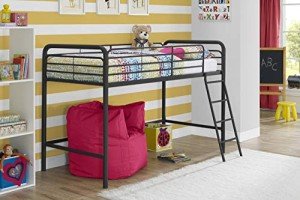How To Explain Bunk Beds For Kids To Your Grandparents

Bunk Beds for Kids: A Comprehensive Guide
Bunk beds have actually been a popular option for kids's bed rooms for several years. They offer a space-saving option that maximizes flooring location, supplies enjoyable climbing up options, and comes in a range of styles that appeal to children's creativities. This short article explores the benefits, factors to consider, styles, and safety features connected with bunk beds for kids.
Advantages of Bunk Beds
Bunk beds present multiple benefits that make them an attractive choice for households. Here are some crucial benefits:
Space Saving
- Bunk beds enable two or more kids to share a room without sacrificing space for play or other activities.
Cost-efficient
- Acquiring a single bunk bed can be more cost-effective than buying 2 different beds.
Enjoyable Factor
- Kids typically see bunk beds as a fun location to sleep and play, cultivating a sense of experience.
Versatility
- Bunk beds are available in numerous setups, including L-shaped, loft beds, and even convertible designs that can change as kids grow.
Company
- Numerous bunk beds include built-in storage choices, such as racks and drawers, helping keep rooms arranged.
Secret Considerations Before Purchasing
Before investing in a bunk bed, it's vital to consider certain aspects, such as:
- Space Requirements
Measure the room to ensure that there is enough vertical space, allowing for sufficient headroom on the top bunk. - Age of Your Children
Consider their age and maturity. Bunks recommend that children under six must not oversleep the top bunk due to security concerns. - Weight Limit
It's important to inspect the weight limitations of the bunk bed for both the leading and bottom bunks to ensure security. - Style Preferences
Choose a design that matches the room's decor and the children's choices. - Material
Bunk beds are readily available in numerous products, such as wood or metal. Bunks has its advantages and disadvantages regarding resilience and aesthetics.
Styles of Bunk Beds
Bunk beds are available in various styles to fit different looks and functional needs. Here's a list of some popular styles:
- Standard Bunk Beds
Traditional stacked beds that include 2 beds built one above the other. - Loft Beds
A bed raised high off the ground, with space underneath for a desk, play area, or storage. - L-Shaped Bunk Beds
Two beds set up in an L-shape, offering more flooring space and a special design element. - Twin Over Full Bunk Beds
These options include a twin bed on the top and a full-sized bed on the bottom, accommodating older kids or adults. - Triple Bunk Beds
Developed for three kids, these beds typically include three stacked beds, perfect for bigger households.
Safety Features to Consider
Guaranteeing the safety of kids utilizing bunk beds is critical. Here are some safety features to look for before buying:
- Guardrails
A bunk bed should include strong guardrails on the top bunk to avoid unexpected falls. - Ladders
Ensure that the ladder is securely attached and simple for kids to navigate safely. - Stability
Try to find bunk beds with lower centers of gravity and wide bases to offer much better stability. - Quality Construction
Choose beds made from resilient materials that meet security requirements, such as ASTM (American Society for Testing and Materials) guidelines.
Frequently Asked Questions About Bunk Beds
1. What just click the next website page is appropriate for a top bunk?Generally, children aged six and older are recommended for oversleeping the top bunk. 2. Are bunk beds safe for toddlers?Most specialists recommend against
positioning young children in the leading bunk due to the
danger of falls and improper ladder use. 3. Can bunk beds be separated?Many bunk beds are designed to be separated into two standalone beds,
offering added flexibility as children grow
. 4. How do I preserve a bunk bed?Regularly check for loose screws and use, keep mattresses tidy, and make sure that the bunk bed is
stable to lengthen its lifespan. 5.
Are there any unique mattress requirements for bunk beds?Yes, mattresses for bunk beds must fit comfortably without leaving spaces. Typically, thinner bed mattress
(around 6 to 8 inches )are suggested for top bunks for safety. Bunk beds offer a flexible, practical, and enjoyable solution for children's sleeping arrangements, making the most of space while accommodating multiple kids in one space. By thinking about the important aspects
of design, security, and space, moms and dads can make a notified decision when choosing the ideal bunk bed for their children's requirements. With the ideal care and maintenance, a bunk bed can be a beloved furniture piece that supplies years of use and pleasure for kids. Summary Table of Bunk Bed Styles Style Description Best For Standard Bunk Beds Classic design, two stacked beds Smaller sized rooms Loft Beds Elevated bed with open space beneath Study or play areas L-Shaped Bunk Beds Two beds in an L-shape
Included flooring space Twin Over Full Twin on the top,
| complete on bottom Accommodating older children Triple | ||||||
|---|---|---|---|---|---|---|
| Bunk Beds | Three stacked beds | Larger families By understanding | the numerous alternatives available, designated considerations for safety and functionality, and proper age guidelines, households | can pick the best bunk bed that not | only enhances their living space | however also makes sure a safe and |
| enjoyable sleeping environment | for their children.

|
